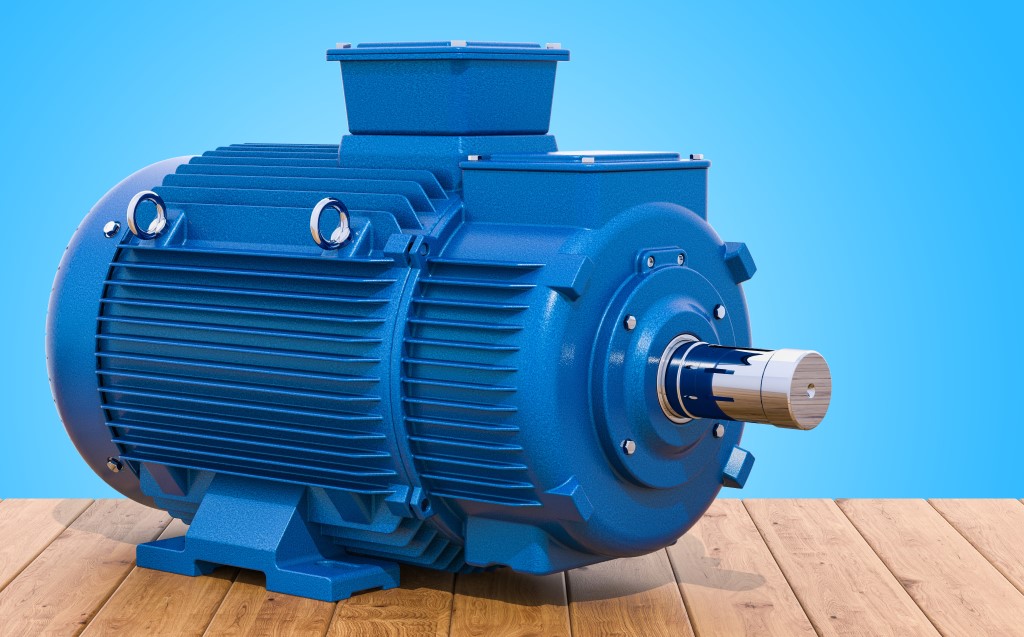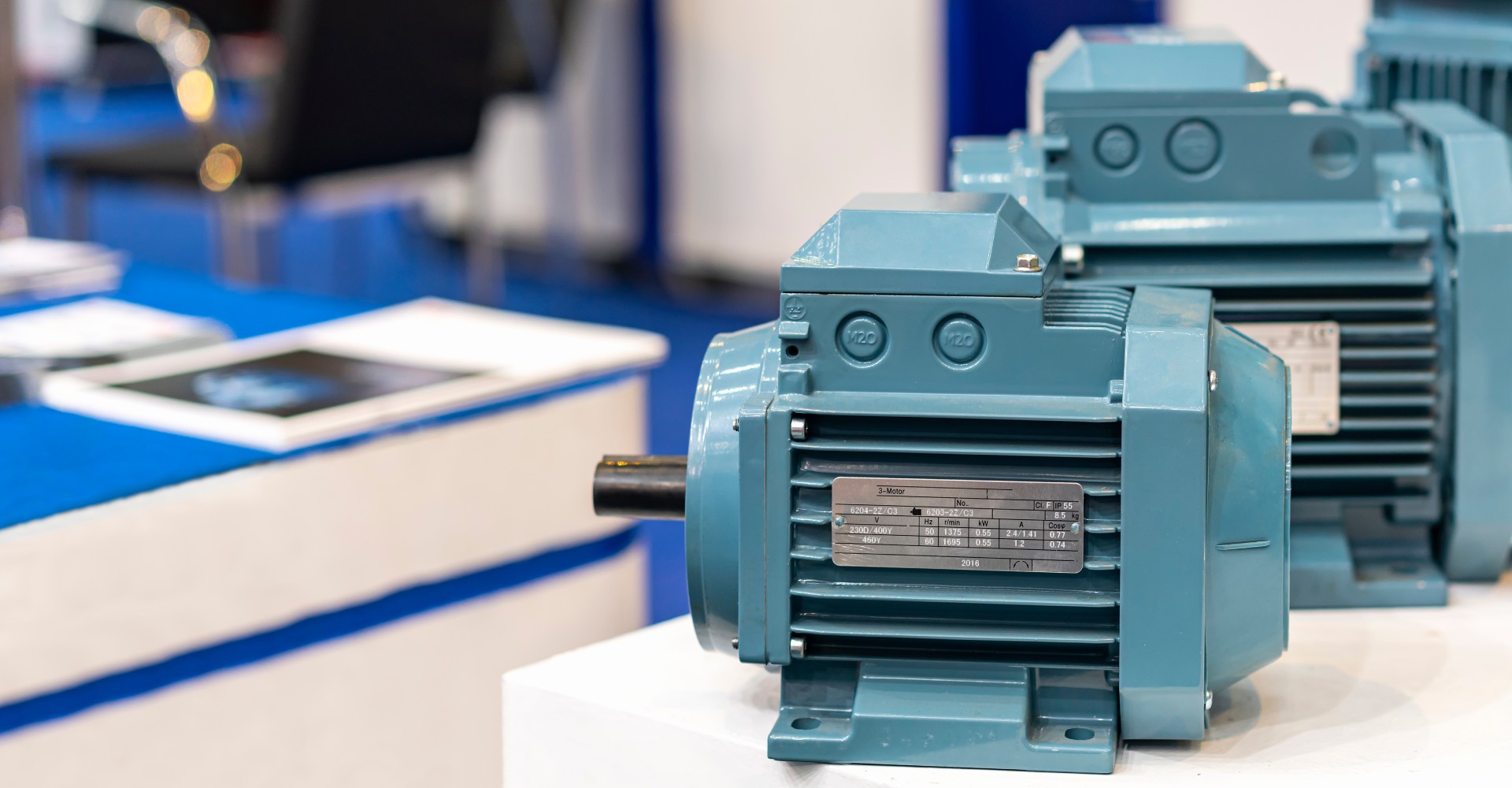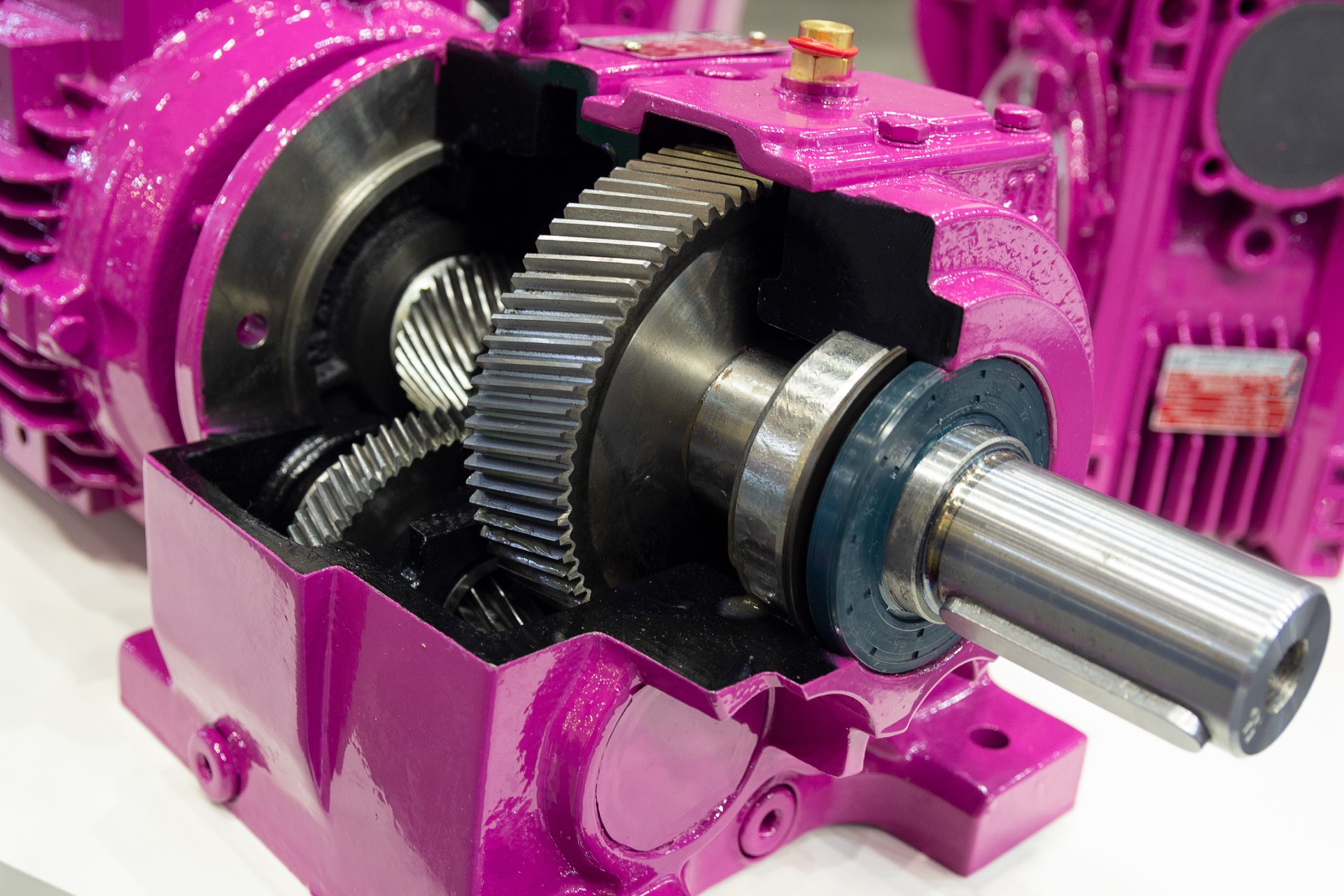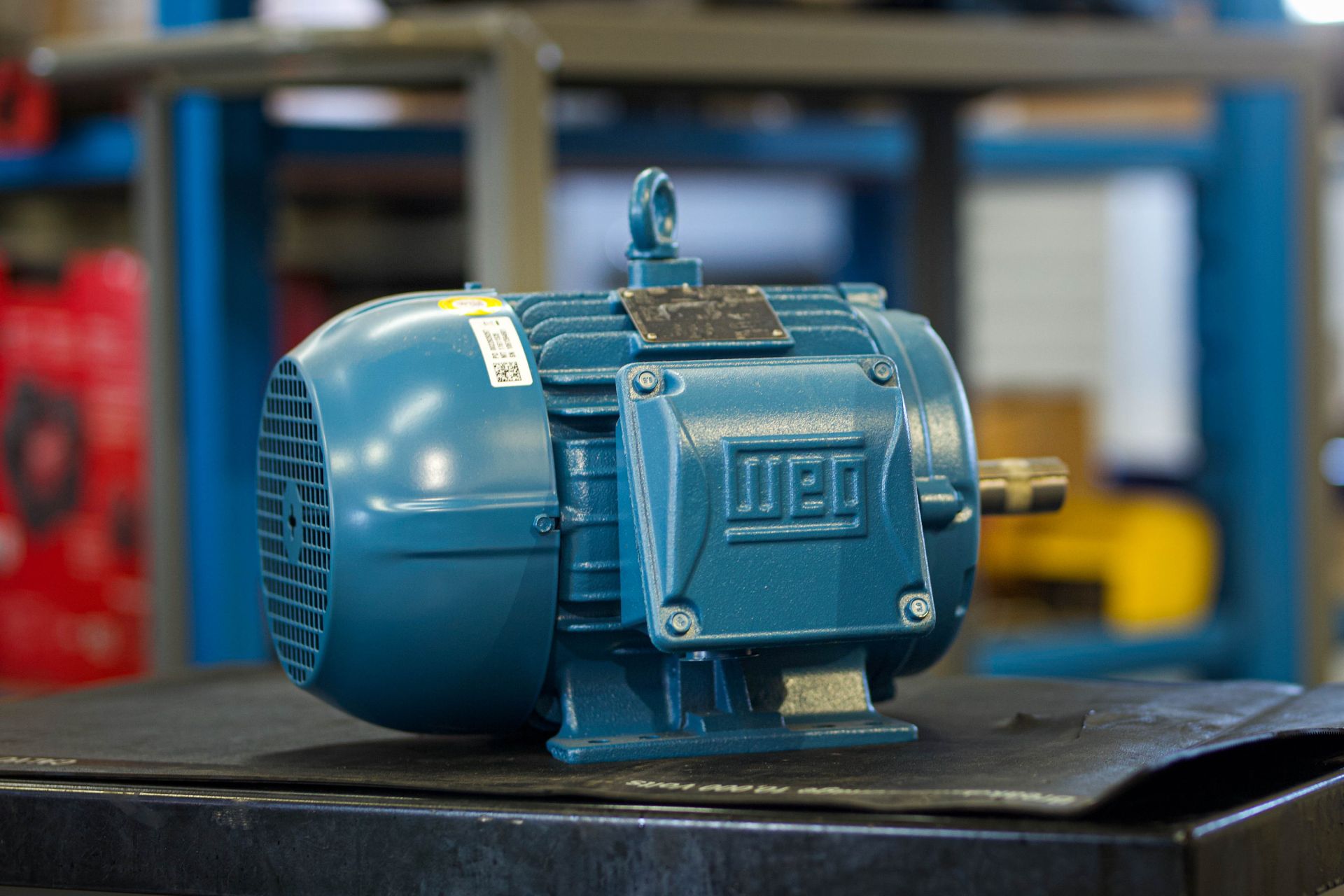If you’re wondering what a servomotor is, you’re in the right place!
Our specialists in the sale, repair, and maintenance of electric motors have mastered this topic and love sharing their expertise!
So, get ready to learn everything you need to know about servomotors and their applications by reading this article!
Definition of Servomotor
In general, a servomotor (or “servo”) is an electromechanical device used to precisely control the angular position, speed, or torque of a mechanism. It typically consists of a motor (often an electric motor), a position sensor, and a control circuit, all housed in one enclosure.
The servomotor operates in a closed loop: it continuously compares the current position to the desired position, then adjust motor movement to eliminate any deviation. This is called a position-controlled system.
Servomotors are used in many fields, including robotics, automatic control systems, and industrial machines to perform precise and controlled movements. They are particularly valued for their accuracy, responsiveness, and ability to maintain a stable position even in the presence of external disturbances.
Key Components of a Servomotor
As mentioned earlier, a servomotor consists of several key elements, each playing a specific role in the system’s operation and control. Here are the main components:
Motor
In a servomotor, the motor generates the power necessary to produce the rotational or linear movement of the controlled mechanism. The motor can be electric (several types of electric motors can be used), hydraulic, or pneumatic.
Gear Reducer
As its name suggests, the gear reducer reduces the rotation speed of the motor while increasing the torque. It provides slower, more powerful movements, essential for certain applications.
Encoder or Potentiometer
This is the position sensor that measures the current (real-time) position of the motor’s axis. It sends feedback to the control system to compare the actual position to the desired position, ensuring accurate positioning.
Controller
This processing unit receives the control signal (setpoint) and compares it to the current position of the motor, adjusting the power sent to the motor to correct any deviation and achieve the target position.
Power Amplifier
This component amplifies the signal sent by the controller and transmits it to the motor, providing the power needed to perform the requested movements.
Feedback System
Often integrated with the encoder, it constantly sends information to the controller about the position, speed, and torque of the motor, allowing the system to maintain precise control.
Power Supply
Provides the necessary electrical energy to power the motor and other electronic components of the servomotor.
Need a servomotor or want to talk to an expert?
How a Servomotor Works
The typical operation of a servomotor is based on a closed-loop control system. This process happens almost instantaneously, allowing precise and continuous control of the movement or positioning.
To help you better understand it, we’ve broken down the working principle into five steps:
1 – Command Signal
A reference signal, usually in the form of a pulse or voltage, is sent to the servomotor to indicate the desired position or movement.
2 – Position Comparison
The position sensor (such as an encoder or potentiometer) measures the current position of the motor’s axis in real time.
3 – Position Control
The controller compares the current position to the desired position (indicated by the command signal). If a difference is detected, the controller sends a signal to the motor to correct the difference.
4 – Movement Correction
The motor makes the necessary adjustments (rotation or translation) to bring the axis to the target position. The speed reducer can be used to adjust speed and increase torque.
5 – Feedback Loop
The sensor continues to monitor the position and sends this information to the controller to ensure that the motor stays at the exact position or continues the desired movement.
Types of Servomotors and Their Applications
There are several types of servomotors, each suited to specific uses based on their design and mode of operation. Here’s a breakdown of the main types along with application examples:
DC Servomotor
This type uses a DC motor to generate movement. It offers quick response and is easily controlled in terms of speed and position.
Applications
- Industrial robots for fast and precise movements.
- Model-making (RC cars, airplanes) for controlling steering surfaces.
AC Servomotor
Uses an AC motor, often preferred for applications requiring more power and durability. It is generally more robust than DC servomotors.
Applications
- Heavy industrial machinery, such as conveyor systems.
- Process automation in production lines.
Linear Servomotor
This servomotor converts rotational movement into linear movement. It is designed for applications requiring straight-line motion.
Applications
- 3D printers and CNC machines for precise linear movements.
- Lifting systems such as automatic doors or airplane seat actuators.
Brushless Servomotor
Uses a brushless motor to minimize wear and increase efficiency. It offers longer lifespan and is quieter.
Applications
- Drones and autonomous vehicles, for smooth control of propellers.
- Surgical robots, requiring precise and frictionless movement.
Microservomotor
Small in size, it is used where precise control is needed in restricted spaces.
Applications
- Miniature modeling, such as small robots or remote-controlled airplanes.
- Medical instruments where precision and miniaturization are essential.
Fractional Turn Servomotor
This “servo” is designed to perform rotations limited to a fraction of a full turn, usually at a defined angle (e.g., 90°, 180°, or 270°).
Applications
- Valve control: to open and close valves in industrial systems or plumbing installations.
- Positioning mirrors or antennas: to control devices like parabolic antennas or mirrors in optical systems.
Multi-turn Servomotor
A multi-turn servomotor is a type of servomotor capable of performing several full rotations, unlike standard servomotors with limited rotation (like the fractional turn servomotors above).
Applications
- Lifting systems: In cranes or elevator systems, a multi-turn servomotor can wind or unwind a cable for precise control of lifting or lowering a load.
- Industrial automation: These motors are used in machines requiring long-duration, repetitive movements, such as conveyor systems or winding systems.
Some Advantages of Servomotors
Servomotors offer several advantages that make them essential devices in many industrial and technological applications:
High Precision
Servomotors provide extremely precise control of position, speed, and torque, thanks to their feedback loop that continually adjusts the movement to reach the exact setpoint.
Responsiveness and Speed
They react quickly to commands, making them ideal for applications requiring rapid adjustments and dynamic movements.
Energy Efficiency
Due to their ability to use only the energy necessary to maintain or adjust position, they are often more energy-efficient than other motorized systems, especially in intermittent applications.
Constant Torque at Low Speed
Servomotors can provide constant torque even at low speeds, making them suitable for applications requiring precise torque control and high forces.
Stability
Servomotors can maintain a fixed position with minimal fluctuation, even in the presence of external disturbances, which is critical in automated systems where stability is paramount.
Compact and Lightweight
They offer high power in a relatively compact form, which is beneficial for applications where space and weight are limited.
Servomotor Maintenance and Servicing
Servomotor maintenance and servicing are essential to ensure proper operation, extend its lifespan, and prevent unexpected failures. Here are some key points to monitor for effective maintenance according to our electric motor repair experts:
Regular Visual Inspection
- Connection Check: Ensure all cables, connectors, and terminals are securely fastened and free from corrosion or damage.
- Physical Condition: Inspect the servomotor casing for any wear, cracks, or signs of overheating.
Device Cleaning
- Clean Environment: Keep the servomotor in a clean environment, free from dust, dirt, or debris that could affect sensor performance and motor ventilation.
- Ventilation: Regularly clean ventilation openings to prevent blockages that could cause overheating.
Temperature Monitoring
- Overheating: Regularly check the operating temperature of the servomotor. Repeated overheating can cause internal damage. Ensure the motor’s thermal specifications are not exceeded.
Lubrication
- Gearboxes and Bearings: Some servomotors require lubrication of gearboxes and bearings. Use manufacturer-recommended lubricants and follow specified lubrication intervals.
Performance Verification
- Precision and Speed: Conduct regular tests to verify that the servomotor responds correctly to commands and maintains expected precision.
- Vibrations: Monitor abnormal vibrations that may indicate bearing issues, poor installation, or the need for laser alignment.
Feedback Sensor Control
- Position Sensors: Ensure sensors such as encoders or potentiometers provide accurate data. Any offset or malfunction should be addressed immediately to prevent positioning errors.
Software Updates
- Firmware and Software: If the servomotor is connected to a programmable controller, ensure the firmware and control software are updated to benefit from the latest optimizations and fixes.
Electrical Circuit Testing
- Voltage and Current: Monitor voltage and current levels to detect fluctuations that could damage the motor or reduce its efficiency.
- Electrical Insulation: Regularly test the insulation of wiring and electrical components to prevent short circuits.
Preventive Maintenance Planning
- Maintenance Intervals: Follow the manufacturer’s recommendations for preventive maintenance intervals and necessary actions at each stage (cleaning, part replacement, etc.).
- Maintenance History: Keep a record of interventions to identify trends and anticipate potential replacements before a failure occurs.
Repair or Replacement of Worn Parts
- Mechanical Components: Replace bearings, seals, or other mechanical parts as soon as signs of wear appear.
- Electronics: If electronic components show signs of failure (such as random position control variations), consider replacing circuit boards or sensors.
How to Choose a Servomotor for an Application?
Selecting a servomotor for a specific application depends on several technical and functional criteria. Here are 10 key points to consider when choosing the best servomotor for your needs:
1 – Define Motion Requirements
- Type of Motion: Identify if the application requires rotary or linear movement.
- Precision: Assess the required positioning accuracy.
- Rotation or Translation Speed: Determine the speed at which the servomotor must operate to meet process requirements.
2 – Evaluate the Load
- Load Weight and Inertia: Calculate the mass and inertia of the load the servomotor must move. This helps select a motor with sufficient torque for starting, acceleration, and load maintenance.
- Load Mode: Is the load constant, or does it vary during operation? This will affect the motor torque choice.
- Load Type: Is the load applied linearly or off-center? This can influence bearing or mechanical structure choices.
3 – Required Torque
- Starting Torque: The torque required to initiate movement. If the load is substantial, a high starting torque will be necessary.
- Holding Torque: The torque required to maintain the load’s position, especially in case of resistance or external disturbance.
- Peak Torque: If the application involves sudden load peaks, choose a servomotor capable of providing peak torque without overheating.
4 – Power and Supply
- Power Type: Verify if the servomotor must operate on direct current (DC) or alternating current (AC), and ensure voltage and current match the available supply.
- Rated Power: The servomotor’s power must meet application requirements (in watts or horsepower). An undersized servomotor may overheat or wear out quickly.
5 – Size and Clearance
- Physical Dimensions: Available installation space may be limited, so consider motor size.
- Weight: If the application involves fast movements or weight restrictions, choose a lightweight servomotor to avoid overloading the structure.
6 – Environmental Conditions
- Temperature: The servomotor must operate within the working environment’s temperature range. Some motors can be air- or liquid-cooled if necessary.
- Humidity and Dust: For harsh environments (dusty, humid, or corrosive), choose a servomotor with a suitable protection rating (IP) to withstand these conditions.
- Vibrations: If the environment presents vibrations, opt for a robust servomotor with suitable mounting to minimize wear.
7 – Feedback Type
- Encoder or Potentiometer: Select the position sensor based on the required accuracy and resolution. Optical encoders are often used for high-precision applications.
- Closed or Open Loop: Most applications require feedback to adjust positioning in real time. Closed-loop systems are more precise and responsive.
8 – Controller Compatibility
- Interface: Ensure the servomotor is compatible with your system controller (analog, digital signals, etc.).
- Programmability: If your application requires complex programming or movement sequences, choose a servomotor that can be easily integrated with the control system.
9 – Durability and Maintenance
- Reliability: Consider the expected lifespan of the servomotor and maintenance cycle frequency. Some types (like brushless servomotors) are more durable and require less maintenance.
- Maintenance Ease: Evaluate the ease of replacing parts or components (bearings, sensors, etc.).
10 – Budget
- Initial Cost: The price varies based on type, power, and motor features. Ensure the chosen motor fits your budget while meeting performance requirements.
- Operating Cost: Consider long-term costs such as energy consumption and maintenance needs.
Omnifab: Your Servomotor Expert!
Do you have specific questions about servomotors or need a technician for servomotor repairs?
Omnifab’s team is your best reference. Contact us, and we will quickly mobilize the necessary resources to assist you.




